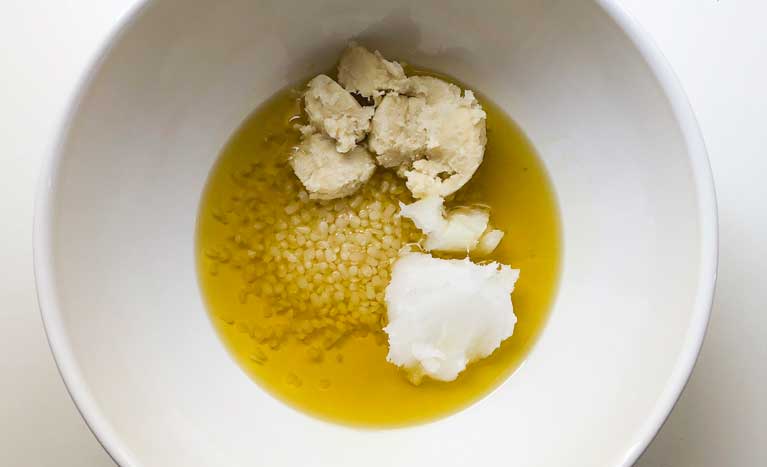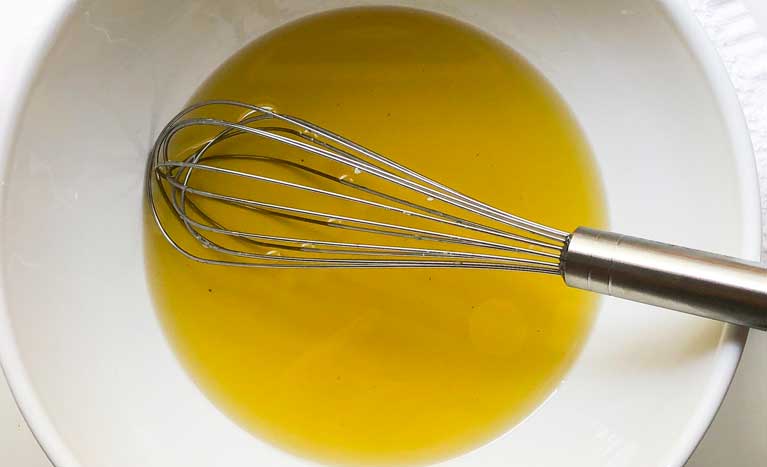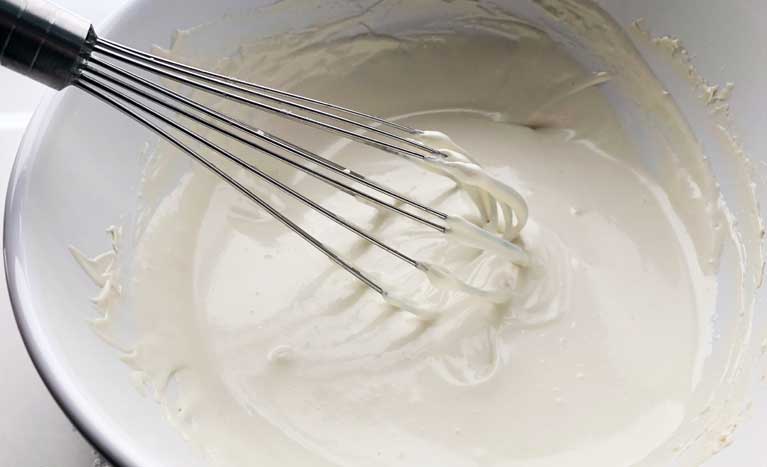Why buy sunscreen when you can make it?
You might think making sunscreen is a difficult task—one best left to monolithic corporations that care more for your health than the money in their pockets. But making sunscreen is easy! Not only is it simple, but you will also know what's on your skin, the largest organ in your body. DIY sunscreen is a fun and safe activity you can do by yourself with kids.
I’ve recently stopped consuming traditional media, began gardening, and now I'm learning to DIY my own home goods. I'm tired of bombarding my body and environment with nasty, harsh chemicals that do more harm than good.
Have you ever read the ingredients in your sunscreen bottle?
I challenge you to actually read the label. I was bothered when I read the list on my sunscreen bottle, so I decided to make my own sunscreen. Rather than blindly relying on others for my health and well-being (and on questionably-funded research), I became my own advocate. You should to do the same! Being your own health advocate means reading ingredient labels on food containers, cleaner bottles, basically any product that you come into contact with. Take control of your environment—ask questions.
We all know the sun is a natural source of vitamin D. The best way to safely get our recommended dose of vitamin D is to go in the sun during non-peak hours (morning or evening) for short periods of time. Don’t stay long enough to get sunburned, just long enough that your body can process some vitamin D (about 15-20 minutes.) If you are in the sun for prolonged periods, especially during peak hours, then definitely use mineral sunscreen to protect yourself!
There are two types of sunscreens: chemical and mineral. Mineral sunscreen is safer than chemical sunscreens. I will teach you how to make DIY mineral sunscreen with non-nano zinc oxide. It may sound daunting, but the process is so simple!
Let me answer a few questions in regards to types of sunscreens and their effects on our health:
Why is mineral sunscreen better than chemical sunscreen?
The active ingredients used in chemical sunscreen, such as oxybenzone, are dangerous to your body as they are absorbed through your skin. These active ingredients in chemical sunscreens can cause hormone disruptions in the body. Hormone pathways are vital to our bodily functions and regulatory systems. Did you know the active sunscreen ingredients, homosalate and octinoxate, increase migration of human breast cancer cells? (Alamer, 2017.) YIKES!
Do these disturbing facts motivate you to be more aware of what you put on your body?
What is zinc oxide?
Zinc oxide is a mineral and a main active ingredient in a majority of mineral sunscreens. Zinc oxide is a broad-spectrum blocker because it protects against UVA, UVB, and UVC rays! Non-nano zinc oxide does not absorb into your skin like the harsh chemicals used in chemical sunscreen alternatives—non-nano zinc oxide sits on top of your skin! It scatters, absorbs, and deflects the sun’s rays all without causing migration in cancer cells!
Is zinc oxide FDA approved?
YES! In fact, in 2019 the FDA found that only zinc oxide and titanium dioxide could be classified as safe and effective for sunscreen use.
Non-nano zinc oxide vs nano zinc oxide?
To put it simply, nano particles can find their way into your system by penetrating the skin barrier. Non-nano particles are too big and so they sit on top of the skin acting as a barrier and protectant against the sun. They don’t travel through our blood stream like chemical ingredients nor will they be found in our system weeks after use.
Another disturbing component of chemical sunscreens is their effect on water and the creatures that dwell within. Specifically, oxybenzone has been linked to coral-reef bleaching. Just imagine all of the chemicals seeping into our waters and disturbing the systems of the animals that live there. We all should be stewards of the earth and consider how we affect the environment and ecosystems.
To avoid the use of harmful chemicals on our body, let’s make our own DIY mineral sunscreen!
The tools needed for this project are a glass bowl , a pot, whisk , silicone spatulas, and mason jars. The ingredients you will use are non-nano zinc oxide, beeswax, coconut oil, olive oil, cocoa butter, and an essential oil for a lovely aroma. I chose to use lavender essential oil produced on a local farm. Lavender has many health benefits including easing headaches (which I often use it for now). That’s it! These are all the tools and ingredients you need.
Directions:
1) In a glass bowl, add the beeswax, coconut oil, olive oil, and cocoa butter. On the stovetop, bring a small amount of water to a low boil in a pot and place the glass bowl over the pot.

2) Stir the mixture occasionally and keep over heat until completely melted.
3) Remove from heat and allow to cool.

4) Once cooled, add in the non-nano zinc oxide and lavender oil. Whisk together the ingredients and allow to sit on the counter for a few hours while occasionally whisking. Place into jars with air tight lids. The mixture will turn from runny to a whipped-like texture after sitting for a day.

5) Rub into skin before prolonged sun exposure.
